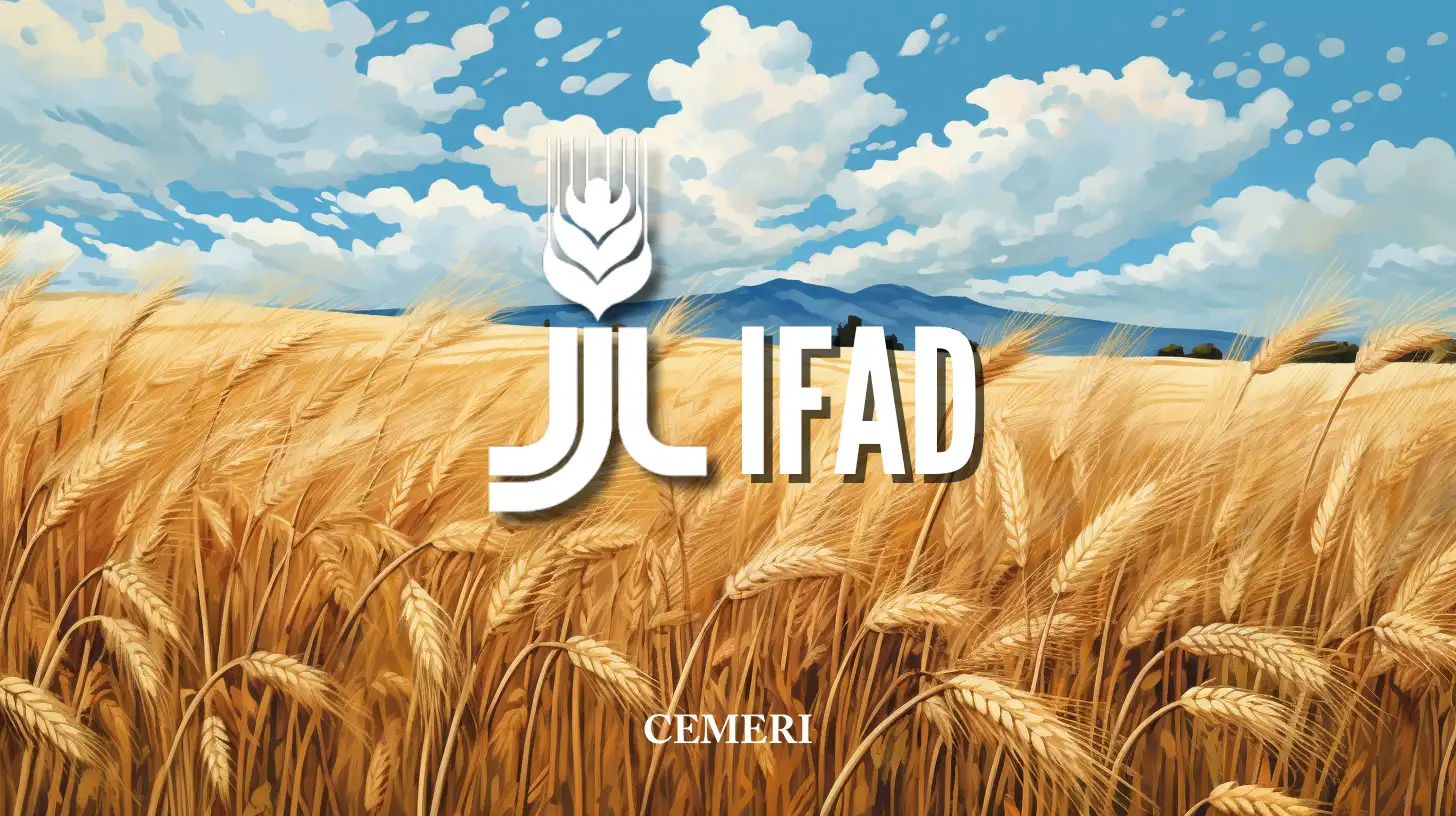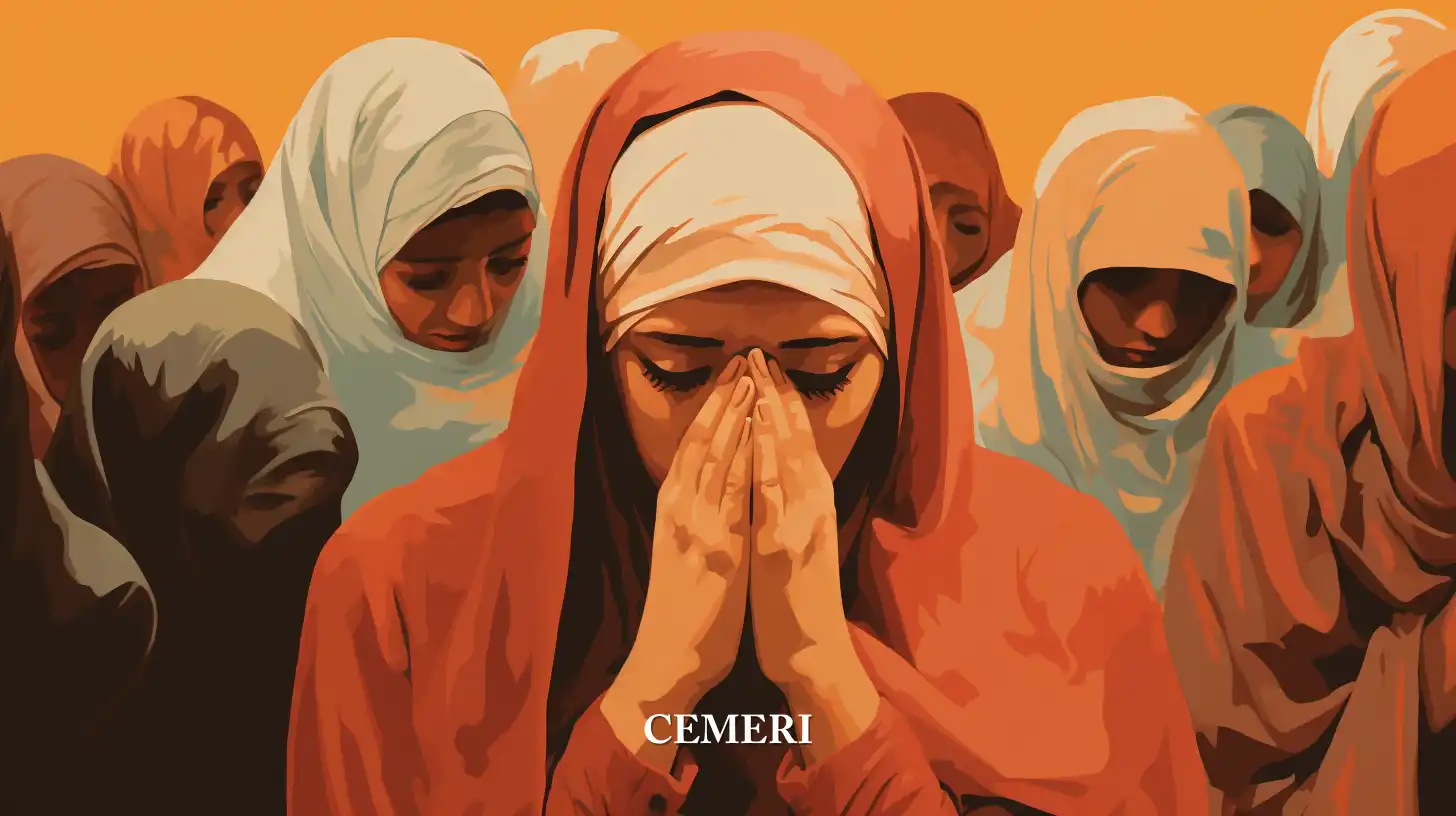Encyclopedia
Aida Jiménez Juárez
What is IFAD?
- IFAD primarily invests in the rural population, empowering them to increase their food security, improve family nutrition, and increase their incomes.

The International Fund for Agricultural Development (IFAD) is a financial institution and specialized agency of the United Nations; Its headquarters are in Rome, Italy, within the United Nations Center for Food and Agriculture. Since its founding in 1978, they have provided about $23.2 billion in grants and low-interest loans to projects that have helped an estimated 518 million people. [1]
IFAD invests mainly in the rural population, empowering them to increase their food security, improve family nutrition and increase their income. This Fund helps to build resilience, expand businesses and give them greater autonomy. Three quarters of the world's poorest people live in rural areas of developing countries, most of which depend on agriculture. [2]
According to IFAD data [3], by 2030 it is possible that climate change, the increase in population and the volatility of food and energy prices, push millions of people in vulnerable situations to extreme poverty and hunger . With a growing world population set to exceed 9 billion people by 2050 [4], a widening gap between rich and poor, and considerable competition for resources; the problems facing humanity cannot wait.
IFAD works where poverty and hunger are deepest: in the most remote regions of developing countries and in fragile situations, where few development agencies usually venture. He has focused on creating a cost-effective, people-centered, and collaboration-oriented approach that delivers results. Small-scale agriculture is a central element of its development model, which connects poor rural women and men with markets and services so that they have the opportunity to grow more crops and, in turn, have more Profits.
Agriculture is a (proven) instrument for poverty reduction; GDP growth generated by agriculture is more effective in reducing poverty. For example, in sub-Saharan Africa, growth in agriculture reduces poverty up to 11 times faster than growth in other sectors [5]. IFAD-supported projects have shown that, with access to finance, markets, technology and information, rural populations can lift themselves out of poverty. [6]
In addition to helping rural populations grow and generate more income, IFAD promotes gender equality and inclusion, helps build the organizational capacity of local communities, and strengthens resilience to climate change.
Mission: A lasting rural transformation
IFAD's main mission is to transform rural economies and their food systems with the intention of making them more inclusive, productive, resilient and sustainable [7]. It seeks to invest in the people who are most at risk of being left behind: the poor, small food producers, women, youth and other vulnerable groups living in rural areas.
IFAD is the only global specialized development organization dedicated exclusively to transforming agriculture, rural economies and food systems. They direct their support with the intention of reaching even the most remote areas, and thus help millions of people in rural areas to:
- Increase your productivity and access markets;
- create and get new jobs that bring rural economic growth;
- increase their resilience in the face of a constantly changing climate and manage the natural resource base sustainably;
- improve their survival mechanisms in case of finding themselves in fragile or conflictive environments;
- Strengthen their voice, their capacities and organizations. [8]
IFAD channels public and private investments, helping to strengthen policies and promote innovation, in order to achieve sustainable benefits for vulnerable people in all countries that require it, and thus achieve lasting and systemic change. The organization works with governments, the private sector and civil society together for the development of rural areas; together, they use tools and instruments to respond to the challenges faced by countries with the most critical needs.
Strategy: Promote sustainable rural development
IFAD's strategic framework 2016-2025 [9] sets out the way we work over the next decade, and the role to be played in the inclusive and sustainable transformation of rural areas. It articulates its contribution to the 2030 Agenda, including the (better detailed) role that IFAD will play in supporting countries to meet their own goals in relation to the Agenda.
This framework states that we will work “bigger, better and smarter” [10], meaning bigger: by mobilizing and leveraging significantly increased investment in rural areas; better: strengthening the quality of rural development programmes; smarter: tuning the efficiency of these and obtaining results in a more profitable way.
The framework sets out three objectives:
- Increase the productive capacity of the vulnerable population in rural areas;
- increase the benefits of your participation in the market;
- reinforce the environmental sustainability and climate resistance of their economic activities.
Empowering people to lead their own development
For 40 years, IFAD has worked directly with the world's poorest people, living in the most remote regions of the planet; Specifically, it seeks to help women, youth and indigenous peoples who live in rural areas. With their innovative empowerment work they try to empower people to be able to lead their own development and “realize their dreams”. [eleven]
IFAD's community approach seeks to ensure that millions of small family farmers around the world trust the Fund [12]. Furthermore, their extensive experience in financing people-centred and cost-effective programs makes them the preferred partner of governments, development agencies, the private sector and NGOs committed to eradicating extreme poverty.
IFAD understands that rural people are business actors who know what they need to succeed [13]: secure land tenure, access to markets, capital and knowledge, clean water, roads and reliable transportation, tools and new technologies, seeds and fertilizers, and good governance. For this reason, the projects supported by the Fund connect the rural population living in poverty with the markets and services with which they can grow and earn more; These projects transform communities economically and socially, in addition to promoting gender equality and inclusion.
IFAD's comparative advantage is that it targets the poorest and most vulnerable peoples, as well as those least likely to have access to assets and opportunities due to social exclusion and marginalization.
To date, they have raised around $26.1 billion and provided another $18.5 billion for agriculture and rural development [14]. According to IFAD calculations, its investments reduce poverty between 5.6% and 9.9% compared to 3% and 7% for cash transfer programs [15]. The co-financing from its partners, and the governments promote said investments.
The Results-Based Allocation System (PBAS) is based on rules that use a formula that incorporates measures of country needs and performance, so that loan and grant resources from the PBA can be allocated. IFAD to national programs based on country results and needs. [16]
Attack the roots of poverty and hunger
IFAD-funded programs and projects help people lift themselves out of poverty and build a better life. Although their job is to “make a difference day by day” [17], they also focus their attention on sustainable solutions that persist in the medium and long term, in order to achieve a true transformation of rural communities; offering financing, tools, knowledge and hope.
Some of the main areas of work [18] are mentioned below:
Responding to COVID-19: The COVID-19 outbreak has spread rapidly across the globe, profoundly disrupting the critical activities that unite the global community, including agriculture, and endangering all that depend on it. [19]
Climate and Environment: Small farmers and the rural poor bear the brunt of climate change and the degradation of natural resources. Extreme weather events such as droughts, storms and floods are putting pressure on the ecosystems on which agriculture depends. [twenty]
Crops: Small farmers are the main food producers worldwide, according to IFAD data, they provide between 60% and 80% of the food produced in developing countries. As the world's population grows, these farmers are under increasing pressure to improve their productivity. [twenty-one]
Fisheries and aquaculture: Fishing and aquaculture are the livelihood of almost 500 million people in the world, however, many of these fisheries are at serious risk due to human pressure, such as the overexploitation, pollution and changes in habitats. [22]
Gender: Women contribute greatly to agriculture and rural economies, but face many challenges that men do not; women have less access to resources and services such as property, finance, training, inputs and equipment. [23]
Indigenous Peoples: It is estimated that there are more than 476 million people who identify themselves as indigenous in some 90 countries of the world, but, too often, they continue to be victims of discrimination and their voices continue to go unheard. [24]
Institutions and organizations: The rural poor rarely control the conditions that determine their livelihoods, geographically dispersed in remote areas, small producers lack basic infrastructure (banks, roads, electricity supply, internet connection , etc.) necessary to run their business. [25]
Land: The competition for land has never been greater; The world is facing population growth, rapid urbanization, climate change, declining soil fertility, and increasing demands for fuel and food security. All this puts pressure on the earth. [26]
Livestock and pastures: Livestock contribute to the agricultural operations of more than 800 million poor small producers; rural households can improve their livelihoods by raising a wide variety of animals. [27]
IFAD takes action to ensure that no one is left behind, focusing on areas such as gender, youth and nutrition; investing to ensure sustainability, climate resilience and inclusive economic progress. Help people and their communities achieve their goals and transform their communities for the better. IFAD seeks to end rural poverty by 2030.
Sources
[1] International Fund for Agricultural Development. (s. f.). About.
[2]Íbidem
[3]Íbidem
[4]Íbidem
[5]Íbidem
[6]Íbidem
[8] Íbidem
[9] International Fund for Agricultural Development. (2016, abril). IFAD Strategic Framework 2016–2025 Enabling inclusive and sustainable rural transformation.
[10]Íbidem
[11] International Fund for Agricultural Development. (s. f.). Our approach. IFAD
[12]Íbidem
[13]Íbidem
[14]Íbidem
[15]Íbidem
[16]Íbidem
[17] International Fund for Agricultural Development. (s. f.). Topics. IFAD.
[18]íbidem
[19] International Fund for Agricultural Development. (s. f.). Covid-19. IFAD.
[20] International Fund for Agricultural Development. (s. f.). Climate and environment. IFAD.
21] International Fund for Agricultural Development. (s. f.). crops. IFAD.
[22] International Fund for Agricultural Development. (s. f.). Fisheries and aquaculture. IFAD.
[23] International Fund for Agricultural Development. (s. f.). Gender. IFAD.
[24] International Fund for Agricultural Development. (s. f.). Indigenous peoples. IFAD.
[25] International Fund for Agricultural Development. (s. f.). Institutions and organizations. IFAD.
[26] International Fund for Agricultural Development. (s. f.). Land. IFAD.
[27] International Fund for Agricultural Development. (s. f.). Livestock and rangeland. IFAD.
International Fund for Agricultural Development. (s. f.). About. IFAD. Recuperado 14 de mayo de 2022, de https://www.ifad.org/en/about International Fund for Agricultural Development. (s. f.). Climate and environment. IFAD. Recuperado 14 de mayo de 2022, de https://www.ifad.org/en/climate-and-environment International Fund for Agricultural Development. (s. f.). Covid-19. IFAD. Recuperado 14 de mayo de 2022, de https://www.ifad.org/en/covid19 International Fund for Agricultural Development. (s. f.). crops. IFAD. Recuperado 15 de mayo de 2022, de https://www.ifad.org/en/crops International Fund for Agricultural Development. (s. f.). Fisheries and aquaculture. IFAD. Recuperado 15 de mayo de 2022, de https://www.ifad.org/en/fisheries International Fund for Agricultural Development. (s. f.). Gender. IFAD. Recuperado 15 de mayo de 2022, de https://www.ifad.org/en/gender International Fund for Agricultural Development. (s. f.). Indigenous peoples. IFAD. Recuperado 15 de mayo de 2022, de https://www.ifad.org/en/indigenous-peoples International Fund for Agricultural Development. (s. f.). Institutions and organisations. IFAD. Recuperado 15 de mayo de 2022, de https://www.ifad.org/en/institutions-and-organizations International Fund for Agricultural Development. (s. f.). Land. IFAD. Recuperado 15 de mayo de 2022, de https://www.ifad.org/en/land International Fund for Agricultural Development. (s. f.). Livestock and rangeland. IFAD. Recuperado 15 de mayo de 2022, de https://www.ifad.org/en/livestock-and-rangeland International Fund for Agricultural Development. (s. f.). Our approach. IFAD. Recuperado 14 de mayo de 2022, de https://www.ifad.org/en/approach International Fund for Agricultural Development. (s. f.). Topics. IFAD. Recuperado 14 de mayo de 2022, de https://www.ifad.org/en/topics International Fund for Agricultural Development. (s. f.). Vision. IFAD. Recuperado 14 de mayo de 2022, de https://www.ifad.org/en/vision International Fund for Agricultural Development. (2016, abril). IFAD Strategic Framework 2016–2025 Enabling inclusive and sustainable rural transformation. IFAD. https://www.ifad.org/en/strategic-framework International Fund for Agricultural Development. (2018, 15 mayo). Performance-based Allocation System [Vídeo]. YouTube. https://www.youtube.com/watch?v=CaM8U1KWTIw&feature=youtu.b

